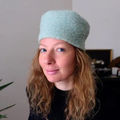MIT tries to make nanofibre spinning affordable
“The electrostatic field is enhanced if the tip diameter is smaller,” Velásquez-García says. “If you have tips of, say, millimeter diameter, then if you apply enough voltage, you can trigger the ionization of the liquid and spin fibers. But if you can make them sharper, then you need a lot less voltage to achieve the same result.”
Wicked wicker
The use of micro fabrication technologies not only allowed the MTL researchers to pack their cones more tightly and sharpen their tips, but it also gave them much more precise control of the structure of the cones’ surfaces. Indeed, the sides of the cones have a nubby texture that helps the cones wick up the fluid in which the polymer is dissolved. In ongoing experiments, the researchers have also covered the cones with what Velásquez-García describes as“wool” of carbon nanotubes, which should work better with some types of materials.
Indeed, Velásquez-García says, his group’s results depend not only on the design of the emitters themselves, but on a precise balance between the structure of the cones and their textured coating, the strength of the electrostatic field, and the composition of the fluid bath in which the cones are immersed.
“Fabricating exactly identical emitters in parallel with high precision and a lot of throughput — this is their main contribution, in my opinion,” says Antonio Luque Estepa, an associate professor of electrical engineering at the University of Seville who specializes in electrospray deposition and electrospinning. “Fabricating one is easy. But 100 or 1,000 of them, that’s not so easy. Many times there are problems with interactions between one output and the output next to it.”
The microfabrication technique that Velásquez-García’s group employs, Luque adds, “Does not limit the number of outputs that they can integrate on one chip.” Although the extent to which the group can increase emitter density remains to be seen, Luque says, he’s confident that “they can make a tenfold increase over what is available right now.”
Massachusetts Institute of Technology
































-Ltd..jpg?tr=w-120,h-60,c-at_max,cm-pad_resize,bg-ffffff)





.jpg?tr=w-120,h-60,c-at_max,cm-pad_resize,bg-ffffff)
.jpg?tr=w-120,h-60,c-at_max,cm-pad_resize,bg-ffffff)






